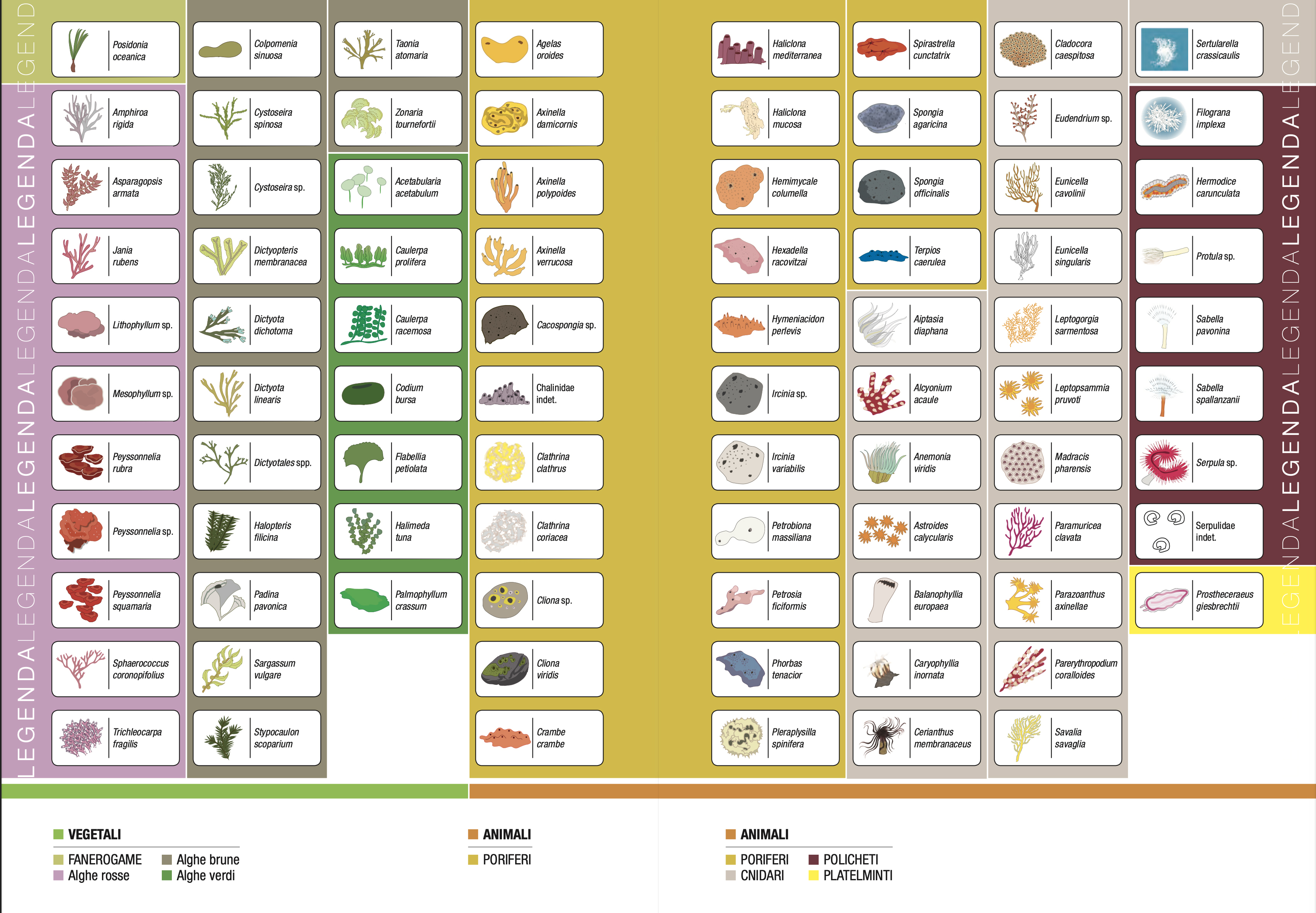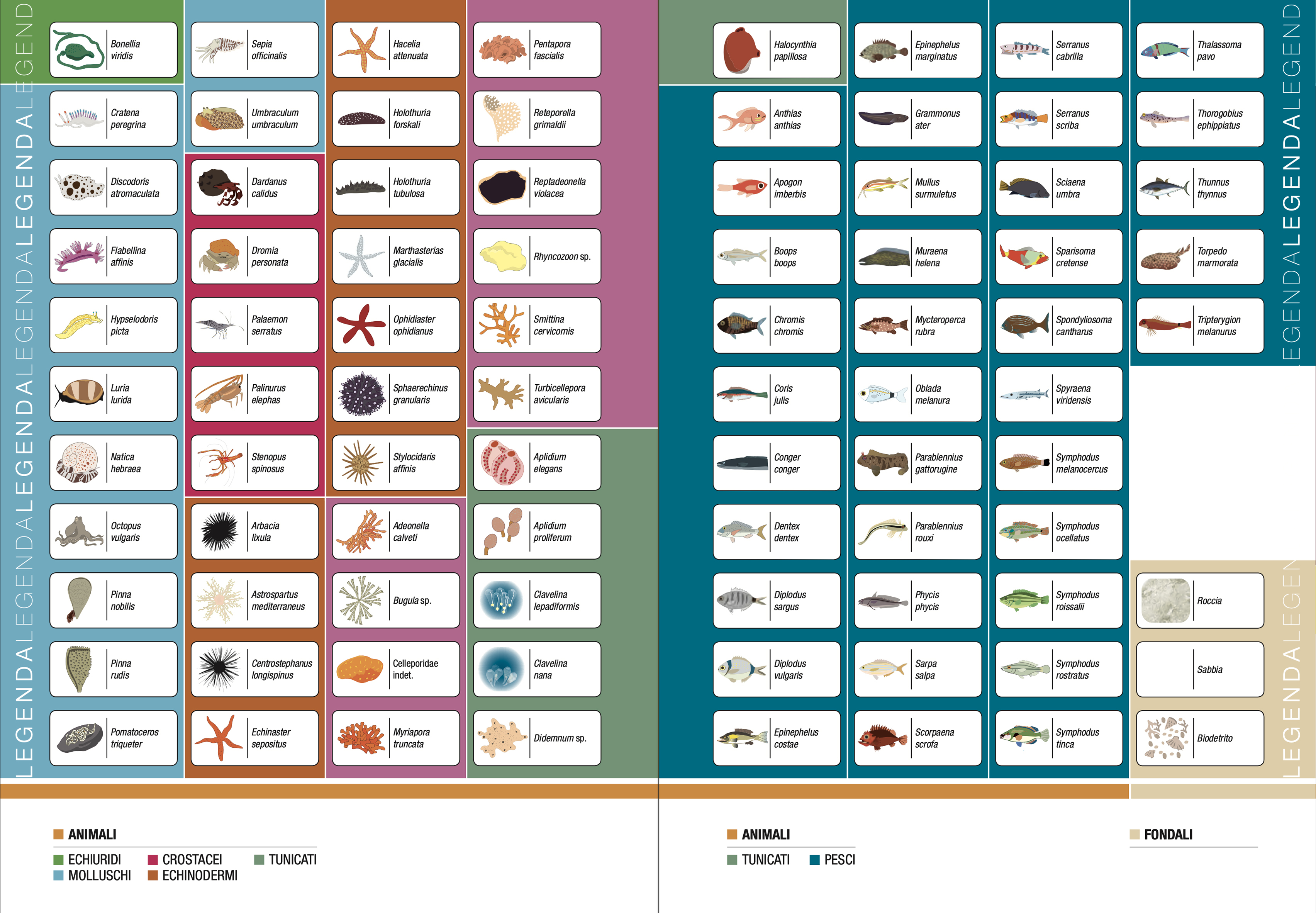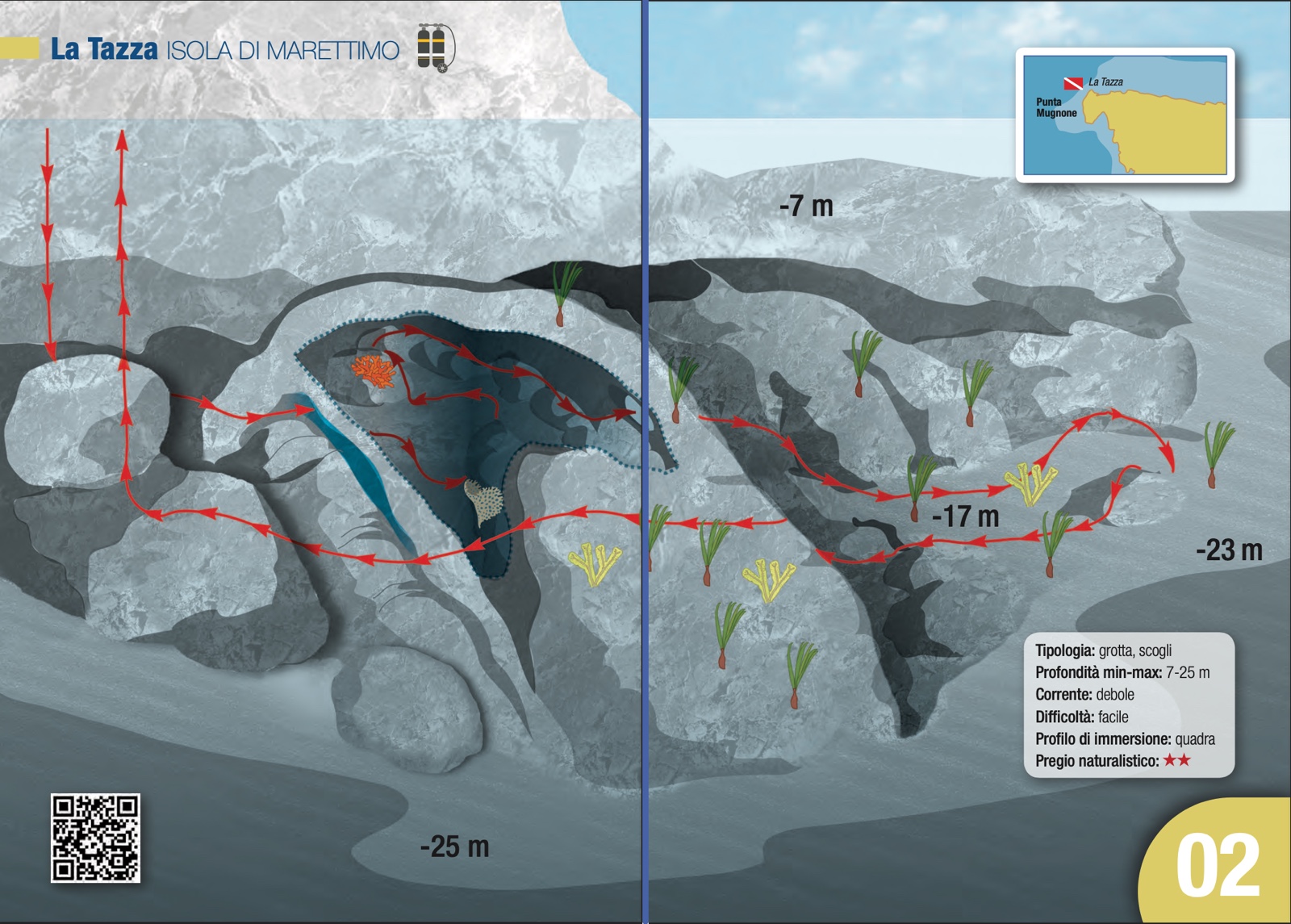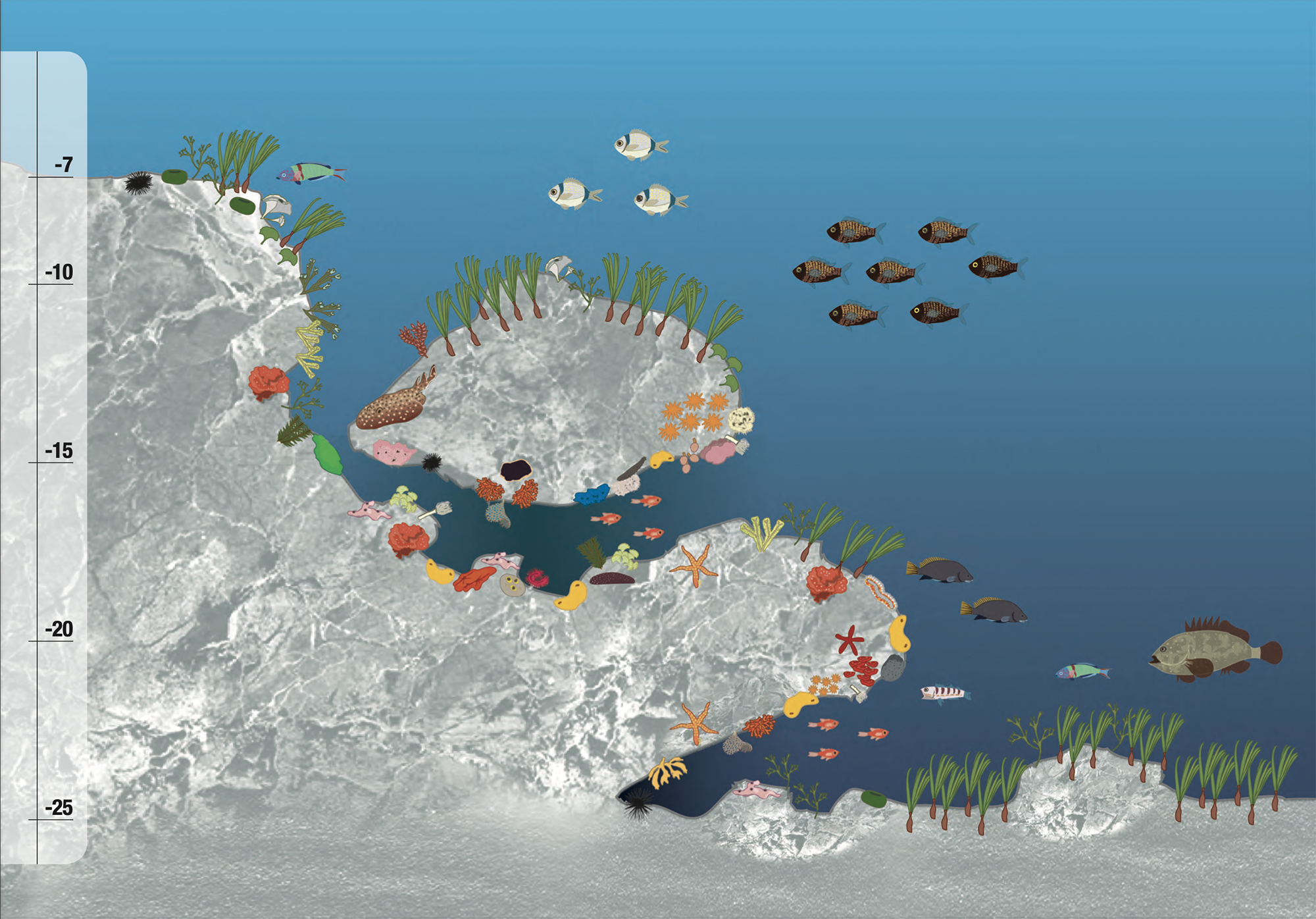Site 2 - La Tazza
The trail begins in a large sub-floor area at a depth of 7 m, where numerous species of algae (Codium bursa, Dictyopteris membranacea, Padina pavonica, Flabellia petiolata) and islands of Posidonia oceanica on rocky substrate, among which the black sea urchin Arbacia lixula grazes. At about 15 m, the entrance to a large cave opens up, where sponges (Agelas oroides, Hexadella racovitzai, Clathrina coriacea, Pleuraplysilla spinifera), bryozoans (Myriapora truncata) and numerous specimens of king mullet (Apogon imberbis) swim by. In the innermost part of the cave, other sponges (Terpios caerulea, Cliona sp.), bryozoans (Reteporella grimaldii, Reptadeonella violacea) can be observed, and on the bottom or walls one can recognise some holothurians (Holoturia tubulosa, H. forskalii), the red star Hacelia attenuata and the black scorpionfish (Scorpaena porcus). At the exit of the cave, at about 17 m, specimens of corvina (Sciaena umbra) can be seen, and among the algae-covered outer collapse boulders (D. membranacea, Halopteris filicina, Asparagopsis armata, Zonaria tournefortii), with a bit of luck one can spot the marbled torpedo (Torpedo marmorata). Specimens of the peacock damsel (Thalassoma pavo) and colourful vermocane (Hermodice carunculata) can be seen on the rocky seabed, on which sponges of the species Spongia officinalis can be seen. Large specimens of green wrasse (Symphodus roissalii) can be seen around the leaves of P. oceanica. Numerous species add colour to the vaults and rocky ravines encountered along the way: the orange bryozoan Myriapora truncata, the red star Ophidiaster ophidianus, the orange madrepore Astroides calycularis, the yellow sponge Axinella verrucosa, the green alga Palmophyllum crassum and the black hedgehog with long spines Centrostephanus longispinus. An extensive meadow of P. oceanica is encountered between 20 and 23 m, where it is not uncommon to see specimens of brown grouper (E. marginatus). Along the way, another cave, less extensive, is populated by sponges (A. oroides, A. verrucosa, Petrosia ficiformis), delicate colonies of bryozoans (R. grimaldii, Adeonella calveti), clouds of mullet kings (Apogon imberbis) and damselfish (Chromis chromis).
Legend:


-
Information
-
Contacts

